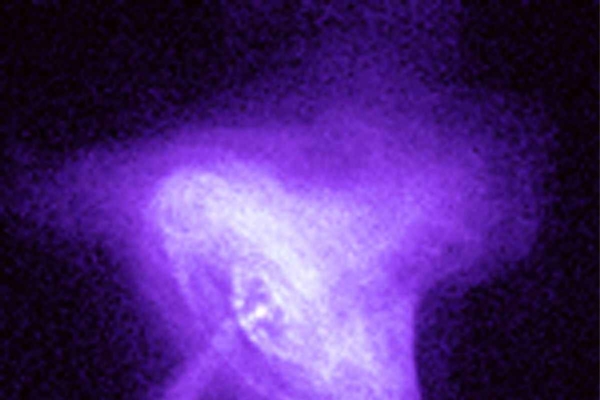Recent discoveries by astronomers have revealed that the universe is undergoing drastic changes, with new celestial bodies and phenomena constantly emerging. Danish astronomers have identified a neutron star located 26,000 light-years away from Earth, rotating at a staggering speed of over 700 times per second, making it one of the fastest rotating celestial bodies observed to date.
Researchers from the Technical University of Denmark (DTU) utilized the Neutron Star Interior Composition Explorer (NICER) X-ray telescope installed by NASA on the International Space Station (ISS) to observe the neutron star in the Sagittarius X-ray binary system “4U 1820-30” at the center of the Milky Way. This neutron star, characterized by its small size, massive weight, and extremely rapid rotation, resembles a “high-speed spinning top” in the cosmic realm.
With a diameter of only 12 kilometers but a mass approximately 1.4 times that of the Sun, this neutron star exhibited 15 thermonuclear X-ray bursts in the period from 2017 to 2021 within the “4U 1820-30” system. One of these bursts displayed a phenomenon called “thermonuclear burst oscillations” with a frequency of 716 Hertz (Hz).
Situated within the metal-rich globular star cluster “NGC 6624,” about 26,000 light-years from Earth, the neutron star in the “4U 1820-30” system possesses strong gravity that attracts and accumulates material from its surroundings and its companion star. When a sufficient amount of material accumulates on its surface, it triggers intense thermonuclear bursts resembling atomic bomb explosions.
The frequencies of these thermonuclear burst oscillations align with the neutron star’s own rotation frequency, indicating that the neutron star from “4U 1820-30” spins at a rate of 716 times per second (or 42,960 times per minute), making it one of the fastest rotating objects observed by humanity. Other neutron stars with ordinary rotation speeds typically rotate at several to tens of times per second.
Additionally, another neutron star, “PSR J1748-2446,” shares a similar rotational speed of 716 times per second (716 Hz) with “4U 1820-30.” The second fastest known neutron star is “PSR J0952-0607,” rotating at a frequency of 707 Hz within the Milky Way field.
The X-ray binary system of “4U 1820-30” consists of not only the neutron star but also a companion star, a white dwarf star the size of Earth composed of electron-degenerate matter remnants of a stellar core. With a mass equivalent to that of the Sun, the companion star orbits the rapidly rotating neutron star every 11.4 minutes, establishing it as the binary system with the shortest known orbital period.
A binary system signifies a system composed of two stars gravitationally bound to each other, orbiting around a common center of mass. These stars may differ in mass, size, or luminosity, with the larger star referred to as the primary star and the smaller one as the secondary star or companion.
Astronomers explain that a neutron star, also known as a “dead star,” originates from a massive star that has exhausted its fuel (hydrogen or helium elements) and can no longer undergo nuclear fusion reactions. As the core gradually accumulates heavy elements like iron, it eventually collapses under the weight of the core, accelerating the star’s rotation speed. The shockwaves generated during this collapse transmit to the dying star’s outer layers, triggering explosions and intense storms, resulting in a “supernova” explosion.
Currently, astronomers have identified thousands of these massive stars post-supernova explosion, making them some of the densest objects observable in the universe.
Dr. Gaurava K. Jaisawal, a senior space scientist at the International Research Center and member of the Technical University of Denmark, remarked, “During our study of the thermonuclear bursts in this system, we discovered significant oscillations, indicating that the neutron star is rotating around its central axis at a remarkable speed of 716 times per second.”
He further added, “If future observations confirm this, the neutron star of the 4U 1820-30 binary system will become one of the fastest rotating objects observed in the universe to date. Currently, only another neutron star named PSR J1748-2446 can rival it.”
Associate Professor Jerome Chenevez of the school’s space science department explained, “During its bursts, the neutron star releases immense energy, shining with a brightness 100,000 times that of the Sun. Therefore, by studying them in detail, we gain new insights into the existing lifecycles of binary systems and the formation of elements in the universe.”
The research findings were published in the Astronomy & Astrophysics journal on October 25th.

